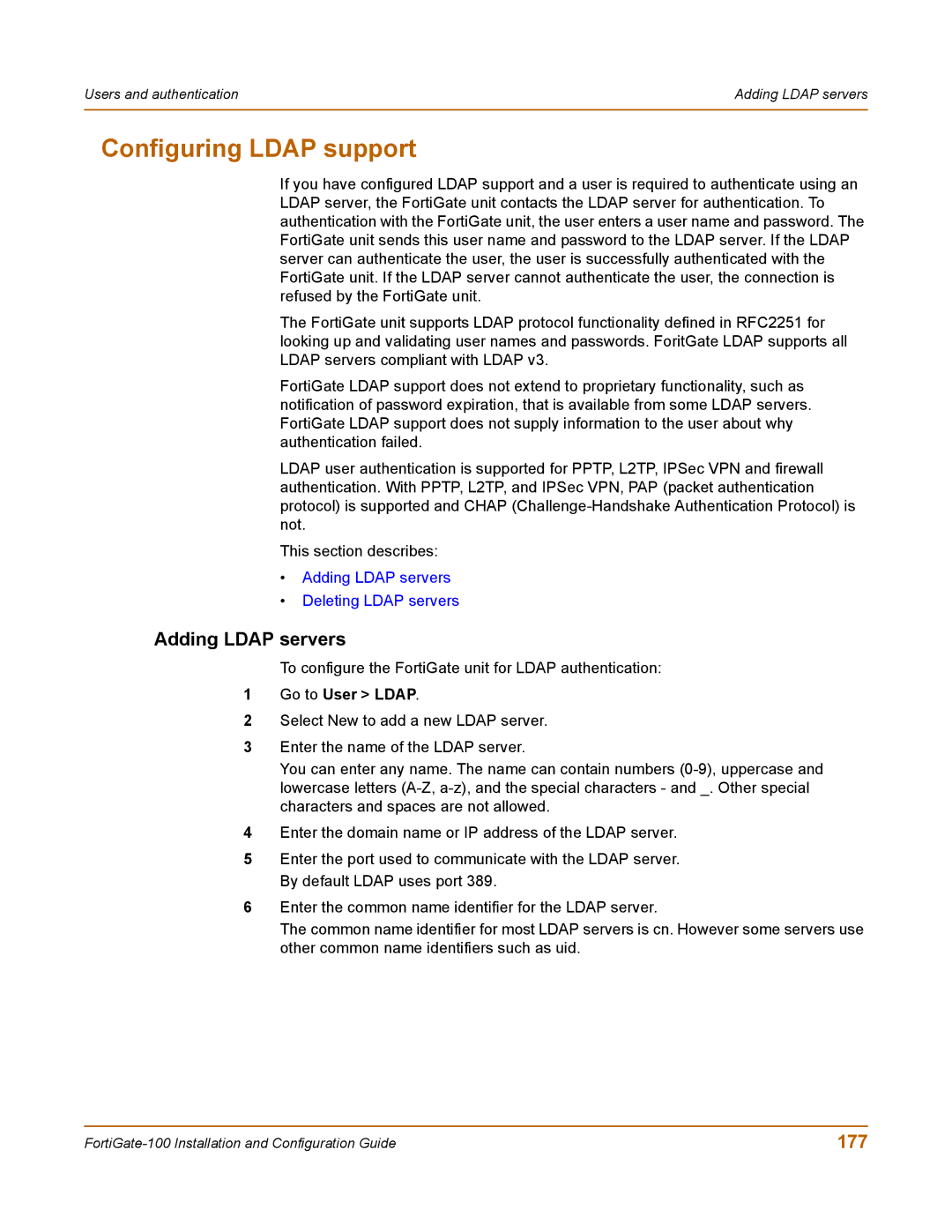Users and authentication | Adding LDAP servers |
|
|
Configuring LDAP support
If you have configured LDAP support and a user is required to authenticate using an LDAP server, the FortiGate unit contacts the LDAP server for authentication. To authentication with the FortiGate unit, the user enters a user name and password. The FortiGate unit sends this user name and password to the LDAP server. If the LDAP server can authenticate the user, the user is successfully authenticated with the FortiGate unit. If the LDAP server cannot authenticate the user, the connection is refused by the FortiGate unit.
The FortiGate unit supports LDAP protocol functionality defined in RFC2251 for looking up and validating user names and passwords. ForitGate LDAP supports all LDAP servers compliant with LDAP v3.
FortiGate LDAP support does not extend to proprietary functionality, such as notification of password expiration, that is available from some LDAP servers. FortiGate LDAP support does not supply information to the user about why authentication failed.
LDAP user authentication is supported for PPTP, L2TP, IPSec VPN and firewall authentication. With PPTP, L2TP, and IPSec VPN, PAP (packet authentication protocol) is supported and CHAP
This section describes:
•Adding LDAP servers
•Deleting LDAP servers
Adding LDAP servers
To configure the FortiGate unit for LDAP authentication:
1Go to User > LDAP.
2Select New to add a new LDAP server.
3Enter the name of the LDAP server.
You can enter any name. The name can contain numbers
4Enter the domain name or IP address of the LDAP server.
5Enter the port used to communicate with the LDAP server. By default LDAP uses port 389.
6Enter the common name identifier for the LDAP server.
The common name identifier for most LDAP servers is cn. However some servers use other common name identifiers such as uid.
177 |
